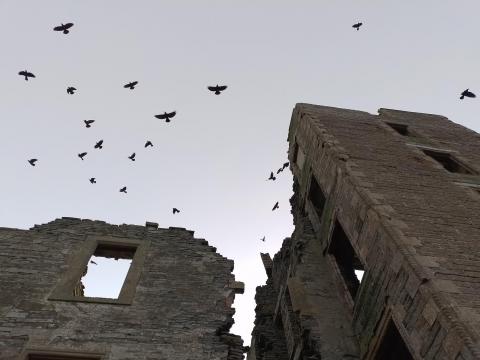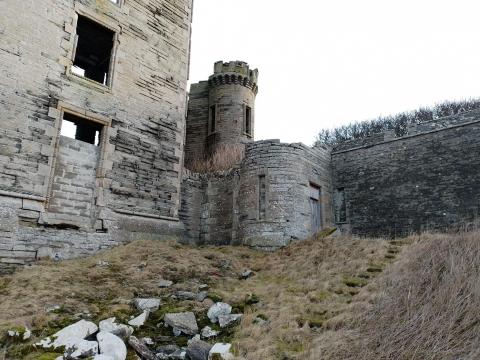Thurso Castle

Yesterday, ahead of crossing the Pentland Firth, I called at Thurso Castle, overlooking the town of that name. Ruinous, it resembles the set of a horror film, or the location for a nineteenth-century gothic novel. Empty, paneless windows offered views of the river, while three dozen crows felt my presence disturbed their roost; their murder cried and flapped about until I took my leave. It really was an eerie place, and also, I was saddened to learn, the general location of Lord Strathnaver’s tragic end in September, 2022. He was to inherit the Earldom of Sutherland, but death claimed him before he claimed it. If it looked like a place of grief and sorrow, providence certainly made it one.

I am reluctant to ascribe spiritual atmospheres, powers or auras to places, although I have previously written about Glastonbury and Varanasi. Too often, however, when we describe a place as being spiritually distinctive, or oppressive, or joyful, we are describing our own states of mind rather than the places we visit. A ruined building is nearly always a sad place, for it bespeaks decay, abandonment, or simply economic inadequacy. Thankfully, I was not required to remain at that place long; our ferry was delayed on account of the poor weather and rough seas, so we had to promptly depart Thurso for Scrabster, wherefrom we sailed.
When we Christians enter a place of sadness, be this a deserted castle, a house of mourning or a shrine to pagan devilry, we must focus not on what we find, but what we bring. To it, the Christian bears the Holy Spirit who dwells within, the knowledge of the Living God found in the scriptures, the light of Christ and the compassion of the Father. If spiritual auras, atmospheres and airs truly exist, Jesus' light which we carrry surely dispels the gloom and despair of the enemy, for...
Ye are of God, little children, and have overcome them: because greater is he that is in you, than he that is in the world. (1 John 4:4)

- Log in to post comments


 Sunday Worship 10.45am & 6.00pm
Sunday Worship 10.45am & 6.00pm